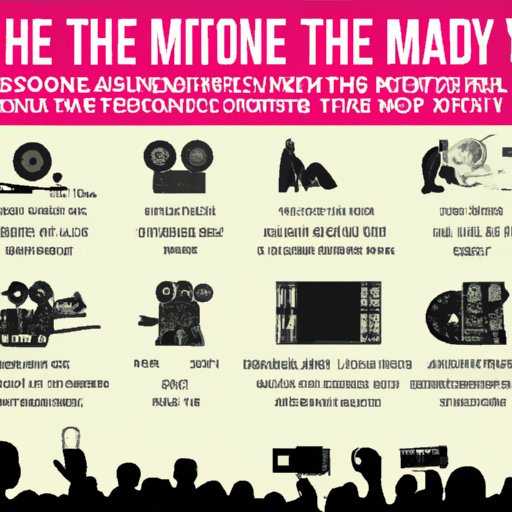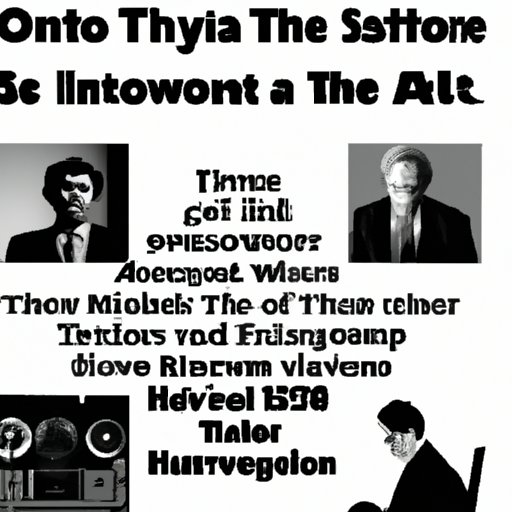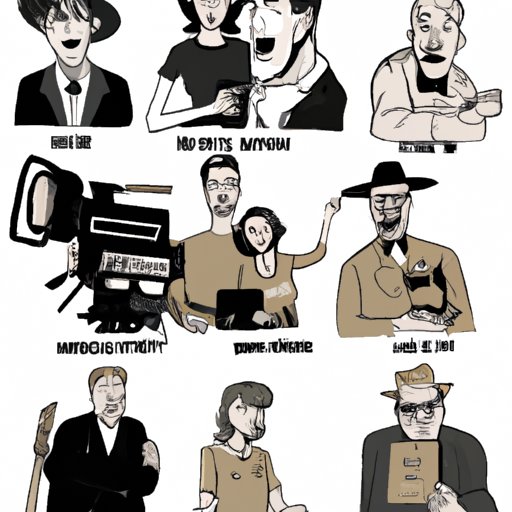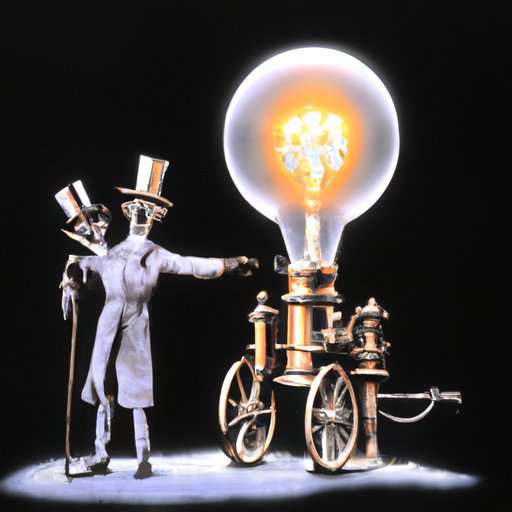Introduction
Movies are an integral part of our lives, from entertainment to education. But who invented movies? The answer is complex and involves a number of pioneers in the field of cinematography. This article will explore these visionaries and their inventions that changed the way we view the world.
A Historical Analysis of the Pioneers of Cinematography
The invention of movies can be traced back to the late 19th century when scientists and inventors began experimenting with moving images. Early devices such as the zoetrope and praxinoscope used still images on a rotating disk or strip to create the illusion of motion. These experiments paved the way for the development of camera technology that could capture and project moving images.
In 1895, the first commercial movie cameras were developed by Thomas Edison and William Dickson. Their invention, the Kinetoscope, was designed to record and play back short films. That same year, the Lumiere brothers developed the Cinematographe, which could both record and project moving images onto a screen.
George Méliès, a French filmmaker, was also an important figure in the early days of movie-making. He is best known for his use of special effects and innovative editing techniques in his narrative films, which were among the first of their kind.
Exploring the Inventors Who Brought Movies to Life
Thomas Edison is often credited as one of the inventors of movies. He and William Dickson developed the Kinetoscope, a peephole machine for viewing short films. The device was designed to show short films in penny arcades and other public places.
The Lumiere brothers, Louis and Auguste, are also credited as major innovators in the history of film-making. They developed the Cinematographe, which was capable of recording, printing and projecting motion pictures. The brothers’ films were the first to be shown in public theaters, marking the beginning of the movie industry.
George Méliès is another important figure in the history of movies. He is best known for his narrative films, which were among the first of their kind. Méliès used groundbreaking special effects and editing techniques to create fantastical stories on film.

A Timeline of Movie Invention: How Movies Came to Be
The invention of movies has been a gradual process that spans over a century. Here is a brief timeline of some of the key moments in the evolution of film-making:
Early Years of Film-Making (1890s-1910s): This period saw the invention of the Kinetoscope and Cinematographe, as well as the emergence of narrative films by George Méliès.
The Golden Age of Hollywood (1920s-1950s): This era witnessed the emergence of the Hollywood studio system, the introduction of sound and color films, and the rise of iconic movie stars.
The New Wave of Movie-Making (1960s-Present): This period saw the emergence of independent film-making, the development of digital technology, and the growth of international cinema.

A Look Back at the Innovators Who Created Movies
The invention of movies can be attributed to several individuals who each made their own unique contribution to the art of film-making. Here is a look at some of the most influential figures in the history of movie invention:
Thomas Edison: Thomas Edison and William Dickson developed the Kinetoscope, a device for viewing short films. Edison was also responsible for developing the technology for making and exhibiting motion pictures.
Louis and Auguste Lumiere: The Lumiere brothers developed the Cinematographe, which was capable of recording, printing and projecting motion pictures. The brothers’ films were the first to be shown in public theaters.
George Méliès: George Méliès was a French filmmaker who is best known for his narrative films. He pioneered special effects and editing techniques that revolutionized the art of movie-making.
These are just a few of the visionaries who played a role in the invention of movies. Other notable figures include Georges Méliès’s contemporary, Segundo de Chomón, who pioneered techniques in stop motion animation, and Eadweard Muybridge, whose work helped develop the technology for capturing motion pictures.

The People Behind the First Movies
While the inventors of movies are often credited as the pioneers of film-making, there are many other people behind the scenes who have contributed to the evolution of the art form. Here is a look at some of the people who have shaped the history of movies:
Directors: Directors are responsible for bringing a script to life and creating the visual style of a film. Notable directors from the early days of film-making include D.W. Griffith, Sergei Eisenstein, and Buster Keaton.
Producers: Producers are responsible for managing the production process and overseeing all aspects of a film’s creation. Early filmmakers such as Carl Laemmle and Adolph Zukor were instrumental in establishing the Hollywood studio system.
Writers: Writers are responsible for creating the story and dialogue of a film. Early writers such as Frances Marion and Ben Hecht wrote some of the most iconic films of the silent era.
Actors: Actors bring characters to life and help create an emotional connection with audiences. Silent film stars such as Charlie Chaplin, Mary Pickford, and Buster Keaton are some of the most recognizable figures in cinema.
Celebrating the Visionaries Who Invented Film-Making
The invention of movies has been a long and complicated process, involving a number of pioneering individuals who have each contributed something unique to the art form. From Thomas Edison to the Lumiere Brothers and George Méliès, these visionaries have left an indelible mark on the history of film-making.
It is important to recognize and celebrate the legacy of these inventors, who have helped shape the way we view the world. Their contributions to cinematography have created a lasting impact on the art of movie-making, and their innovations have opened up new possibilities for filmmakers around the world.
Conclusion
The invention of movies is a complex process that has been shaped by a number of individuals over the past century. From Thomas Edison to the Lumiere brothers and George Méliès, these pioneers of cinematography have left a lasting legacy on the art of movie-making. It is important to recognize and celebrate their contributions to this beloved art form.
(Note: Is this article not meeting your expectations? Do you have knowledge or insights to share? Unlock new opportunities and expand your reach by joining our authors team. Click Registration to join us and share your expertise with our readers.)
